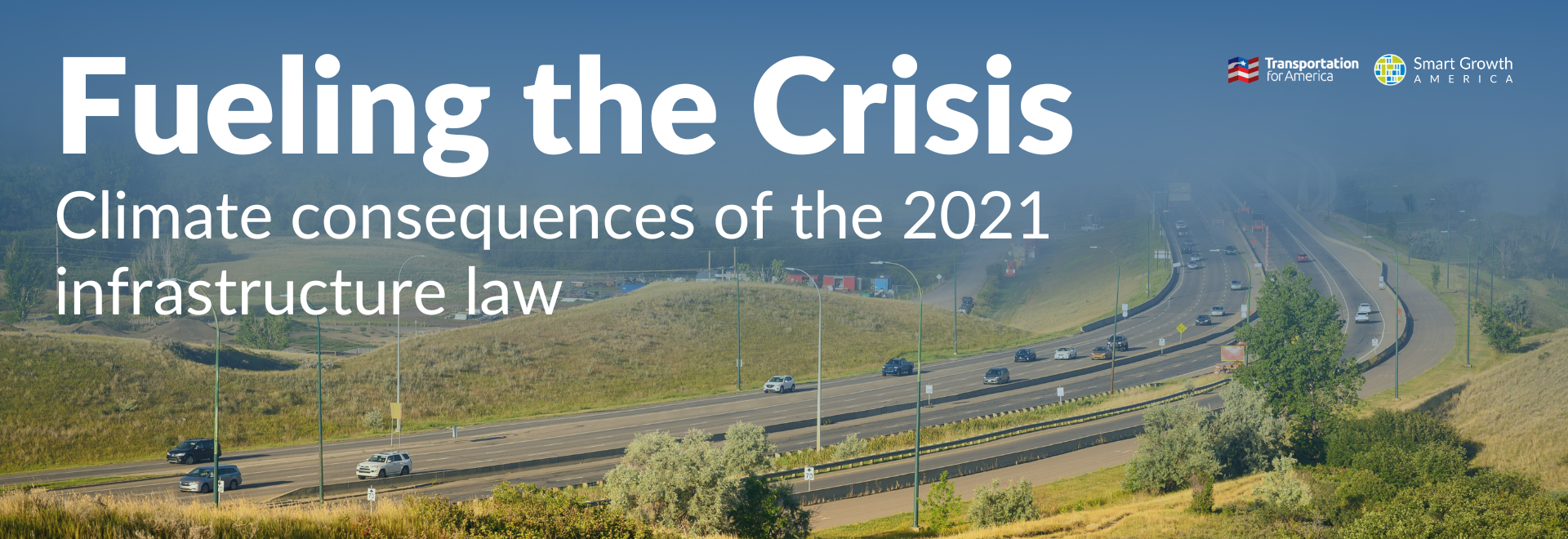Projecting highway formula spending through the end of the IIJA
This analysis evaluates obligations made between FY 2022 to FY 2024, representing approximately 42% of FHWA formula funds apportioned between FY 2022 to FY 2026. What might happen with the rest of the approximately $270 billion in formula funds given to states under the IIJA? While we do not have all the information required to make a conclusive estimate (given that states could change spending patterns and priorities), we can use current spending trends to estimate an upper level estimate.
Assuming highway to transit program funding transfer rates are consistent with pre-IIJA levels, state DOTs could spend up to $89.8 in IIJA formula funds on highway and road expansion projects. Up to $89.8 billion if states transfer funds to transit only at pre-IIJA rates. We made an additional assumption that 30% of Carbon Reduction Program funds would be flexed directly to transit, which is based on state Carbon Reduction Strategy plans and previous CMAQ spending.
Importantly, due to a lack of data, this estimate does not account for transfers between FHWA formula programs. Therefore, this estimate assumes that 100% of a program’s apportionment will be spent as it has so far, ignoring transfers between FHWA programs. For example, transfers from more emissions intensive programs to less emissions intensive programs, such as NHPP to STBG, are not evaluated as FHWA formula fund transfer data is not readily available.
This should be considered a bounding high estimate, as previous research finds the majority of transferred funds go to the Surface Transportation Block Grant, which tends to award slightly less carbon intensive projects. However, under previous transportation reauthorizations, states have transferred over 90% of the funds they could out of the emissions reducing Transportation Alternatives program. Under the IIJA, states have transferred Carbon Reduction Program funds to highway programs, signaling that investment in emissions reducing options may already be a low priority for many states. Publishing state by state data on highway program transfers would allow for more accurate estimates of IIJA emissions and help account for programmatic funding shifts’ climate impact and allow for advocates to keep states accountable.
Converting these assumptions on future spending to emissions, we find IIJA formula funded projects could add an additional 185.1 million metric tonnes of climate pollution to the atmosphere, cumulatively from 2022 through 2040, compared to baseline levels. This is equivalent to running 494 methane gas-fired power plants for a full year, or 47.6 coal-fired power plants running for a year. It is also the equivalent of undoing the annual carbon reduction impact of 48,718 wind turbines.
When including emissions reducing projects, we project net emissions over 122 million metric tonnes of CO2e could be added over baseline levels between 2022 and 2040 due to states’ spending of federal IIJA formula funds in this upper bound scenario.

Our recommendations
We need drastic transformation to transportation policy that prioritizes our system’s state of good repair, places safety over speed, and finally invests in building the rest of the transportation system that we’ve neglected: transit, walking, and rolling. Otherwise, we should all expect the same default results: congested roads, climate pollution, dangerous streets, and divided communities.






